This essay was originally published in The Public Domain Review under a Creative Commons License. Please see their rules for reuse.
Mary Fissell on how a wildly popular sex manual — first published in 17th-century London and reprinted in hundreds of subsequent editions — both taught and titillated through the early modern period and beyond.
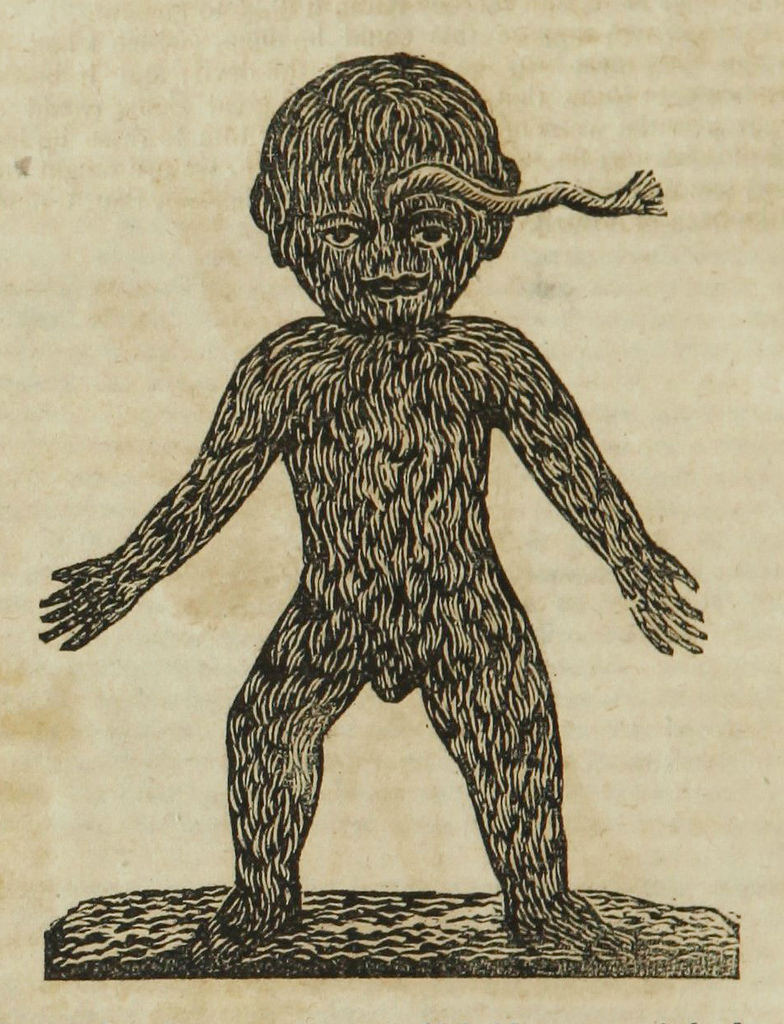
John Cannon, a teenaged agricultural laborer, bought a book called Aristotle’s Masterpiece for a shilling in 1700. He usually read chapbooks like Fortunatus and Dr Faustus, but he bought the Masterpiece in order to “pry into the Secrets of Nature especially of the female sex” — to find out about sex. What he learned was so intriguing that he took to spying on the family maidservant when she went to the privy; he bored a few holes in the wall so he “could plainly see” the parts discussed in the book.1
The book that Cannon read so eagerly was neither by Aristotle nor usually considered a masterpiece. It is, however, one of the best-selling books ever produced in English on sex and making babies. First published in London in 1684, it went through hundreds of editions in England and America. It was still for sale, largely unchanged, into the 1930s and beyond. References to the work pop up in the historical record like some kind of Zelig figure, often on the margins of unexpected moments. The huge numbers of editions and the frequency of references to it suggest that this book provided a kind of sex education to the masses long before the concept of sex education was invented.
Such popularity makes us question assumptions about how people in the pre-modern world learned about sex. Often we suppose that rural people like John Cannon did not need to consult books to learn about sex; they lived “closer to nature”, and could abstract what they saw in the barnyard to the bedroom. The most common euphemism for sexual knowledge, “the birds and the bees”, was first used by Samuel Taylor Coleridge in 1825, at the very moment at which England’s population became more urban than rural for the first time. But Cannon’s experiences, and those of a host of other readers, show us that for centuries English and American readers turned to this cheap book eager for information that was not, in fact, easily inferred from the natural world.
The book itself was pasted together in 1684, a mash-up of earlier works on midwifery and natural philosophy.2 It was an almost immediate bestseller. While John How, its first publisher, obediently registered the work with the Stationers’ Company, the book soon slipped the traces of any form of regulation; it was pirated in its very first year of publication. It was produced in multiple versions by a host of printers and publishers, only some of whom were willing to put their names on the title pages of the works. (For the most popular version, see a 1728 edition here). By the middle of the eighteenth century, there were more editions of the Masterpiece than all other popular works on reproduction combined. It continued to sell steadily until the 1870s in North America, when its publication was curtailed by the Comstock Acts. In Britain, it was still being reprinted into the 1930s.
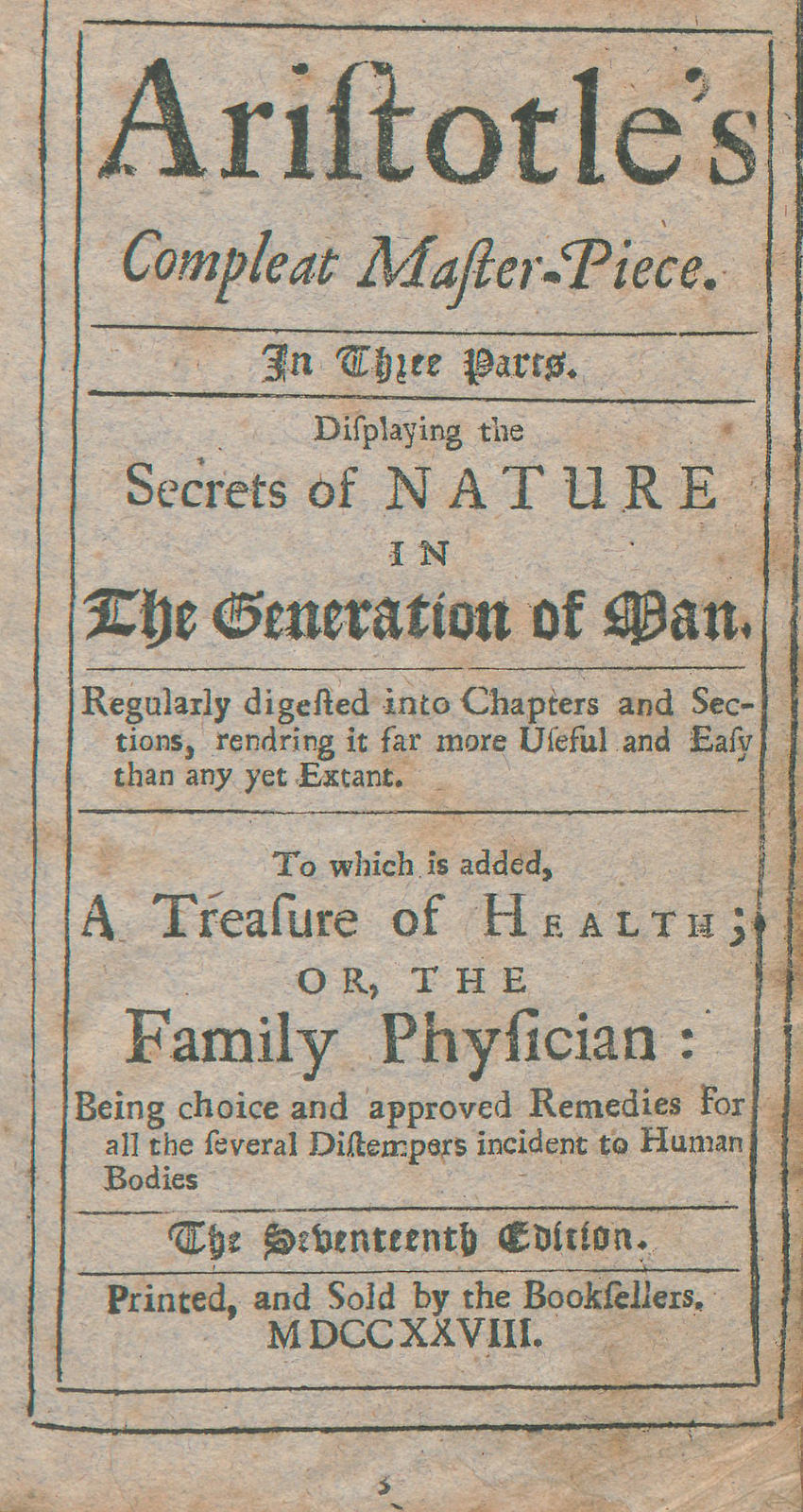
Perhaps the work was attributed to Aristotle in an attempt to provide a cloak of learned authority, but more likely the name was an allusion to Aristotle’s popular-culture reputation as a sex expert. This unlikely role derived from an earlier pseudo-Aristotle text, Aristotle’s Problems, first published in English in 1595.3 The work contains some of the most explicit discussions of the mechanics of sex and reproduction available in English at the time, in an easy-to-read question and answer format, including “What is carnal copulation?” and “How are hermaphrodites begotten?”. Within a decade, the name Aristotle was used as a joking reference to sexual knowledge in plays performed upon the London stage. To many a browser upon a bookstall, the name Aristotle in the title meant — nudge nudge wink wink — a book about sex.
And it wasn’t just the title. The work was almost always accompanied by a frontispiece image of a near-naked woman, implicitly promising the reader titillating information. The most popular version of the book contained a racy poem, ostensibly provided for a husband to read to his bride to get her to bed, with lines like, “Now my infranchis’d Hand on every Side, Shall o’er thy naked polish’d Ivry Slide”. Like much else here, the poem isn’t an original, but rather re-arranged lines from an earlier work by Thomas Carew. The book valorizes sexual pleasure, for both women and men, explaining that mutual delight is needed for conception. Each chapter is summed up in brief verses,
Thus Man’s most noble Parts describ’d we see;
(For such the Parts of Generation be;)
And they that carefully survey’t, will find,
Each Part is fitted for the Use design’d:
The Purest Blood we find, if well we heed,
Is in the Testicles turn’d into Seed;
and so on, assuring readers that the design was intended to excite “the more delight” in the “amorous combatants”.4 Such rhyming doggerel was reminiscent of teaching strategies in early modern primary education.
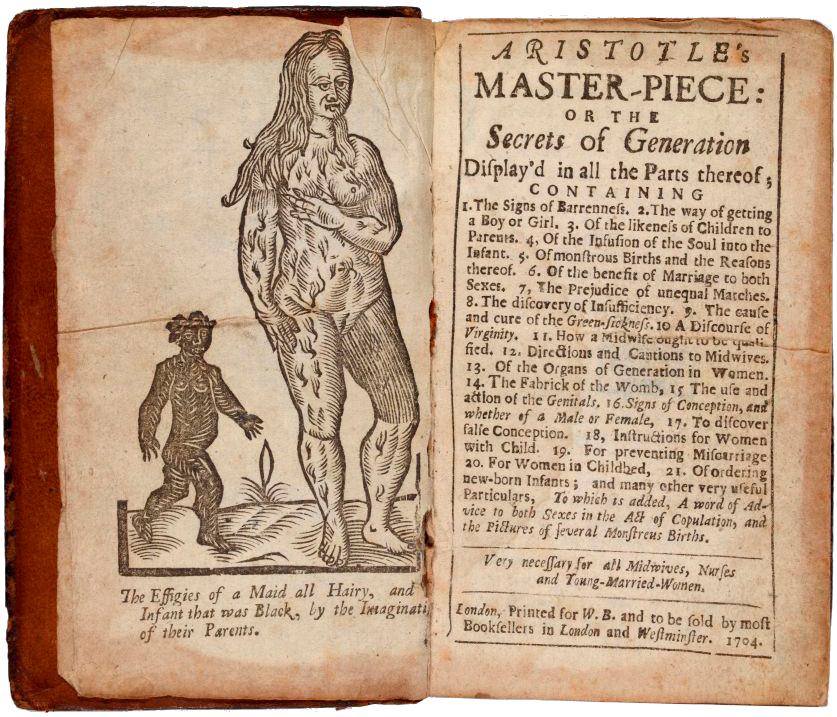
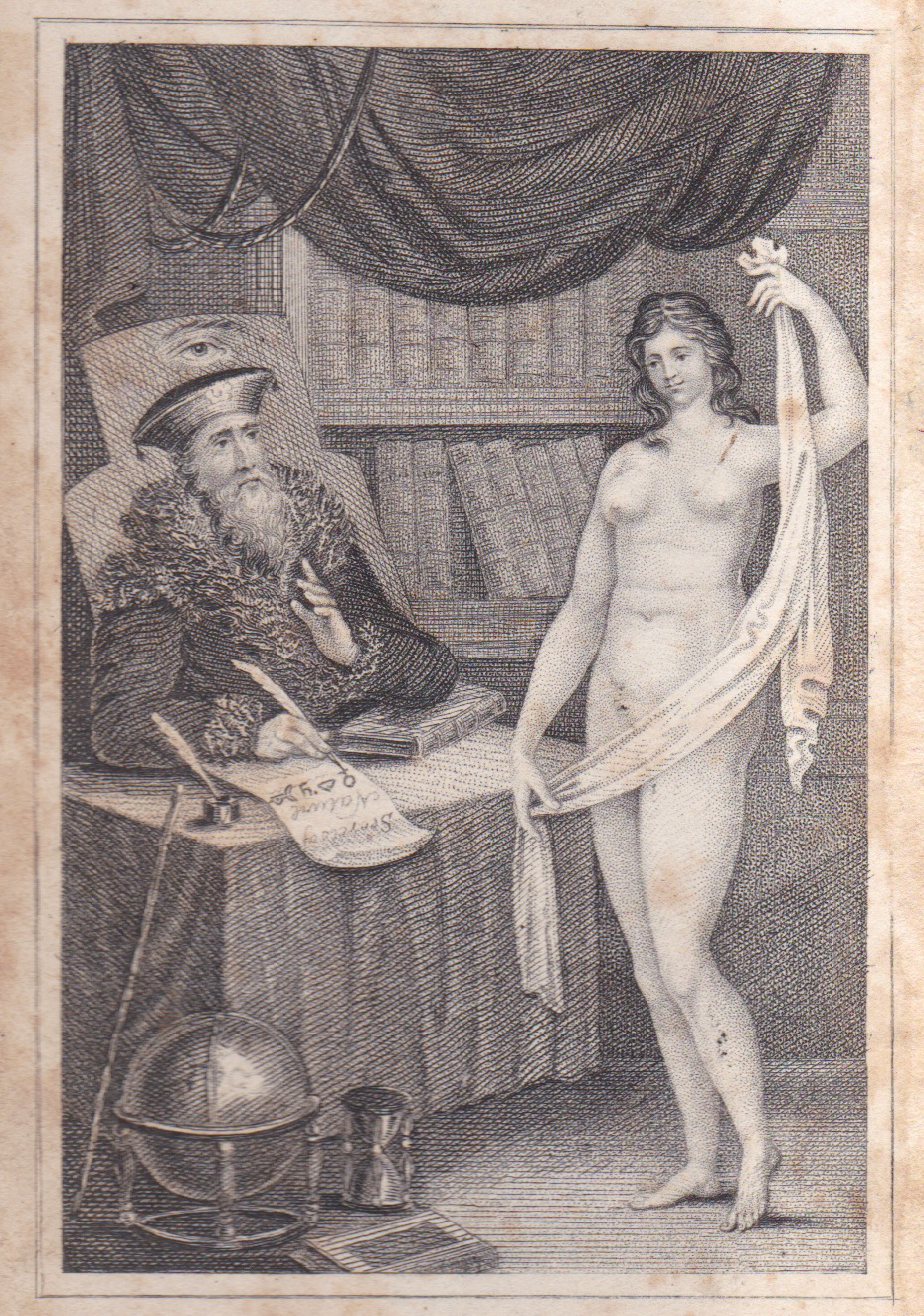
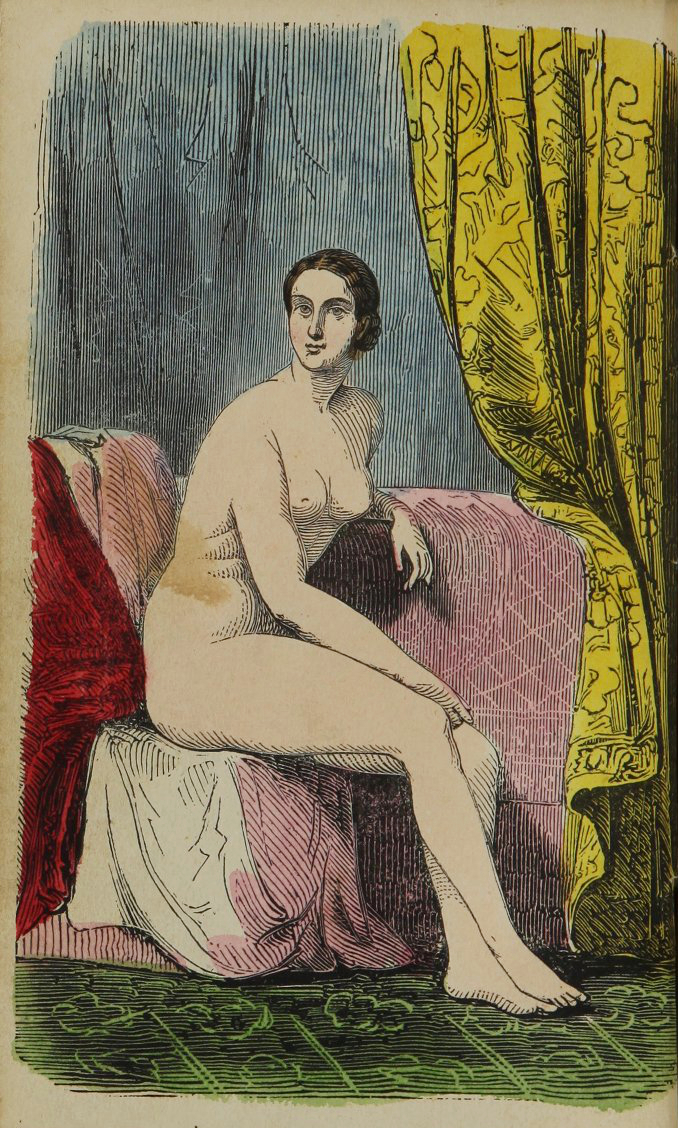
Undoubtedly, the racy poem, the woodcut of the near-naked woman, and the promise of sexual knowledge must have appealed to many a teenaged male reader like John Cannon. But the book also provided a solid framework of contemporary knowledge about the basics of pregnancy, childbirth, and infant health, detailing topics such as the signs of pregnancy, how to tell false labor from true, the various positions the baby might present in, etc. Not surprisingly, since it was plagiarized from another midwifery book, this information was largely unexceptional.
The book’s prose style promised readers that medical knowledge was not difficult. For example, in discussing barrenness (what we’d call infertility) the text assured the reader that if the fault were a malformation of the male partner, “this is plain and easily discern’d, that it needs must be obvious to both Parties”. By the early eighteenth century, the most common version of the text also included dozens of recipes for household remedies and a guide to physiognomy. From this perspective, the book was a distant ancestor of those such as What to Expect when You’re Expecting that crowd the shelves of today’s bookstores.
In the mid-eighteenth century, the British radical Francis Place read the Masterpiece whilst a schoolboy. In his memoirs, he explains that reading about the mechanics of conception made him doubt the Biblical account of the conception of Jesus.5 Like John Cannon, Place was an eager consumer of sexual knowledge; he used to go to London’s secondhand bookstalls and page through medical works, looking for anatomical pictures that he found exciting, until shooed away by irate booksellers.
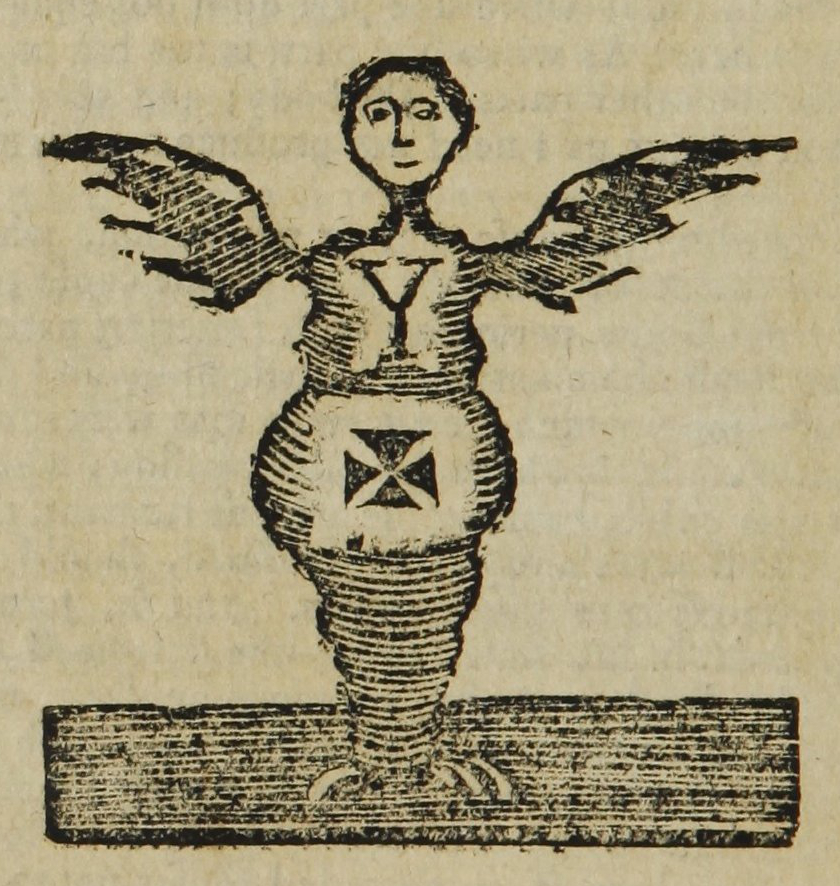
But the Masterpiece was not just read by teenaged boys. In a copy of the first edition held by the University of Pennsylvania, there is a series of inscriptions that tells a different tale.6 First is what appears to be a courtship vow, a promise between a George Hoare and Elizabeth Vincent, living in rural Somerset. Evidently they pledged themselves to each other in 1684, the year the Masterpiece was first published. The vow wasn’t written down, however, until December 12, 1685, with each partner promising, “I do wish that I may never prosper if I be the cause of breaking of it”. A few years later, on June 29, 1687, they pledged again on the next page of the book, and this time the vow seems to have been accompanied by a gift of pieces of silver, probably from George to Elizabeth. Such courtship gifts were not uncommon guarantors of fidelity. Nine years after their first promise, George and Elizabeth were wed on Boxing Day in the small village of Dowlish Wake; ten months later their son William was baptized in the same parish. For this couple, the book, with its implicit promise of marital sexual pleasure, became the tangible form of their commitment to each other.
For others, the book functioned more like a family bible. In the back of the very same copy in which George and Elizabeth had inscribed their promises, one Sarah Fackerall recorded the births of her children: William (1805); sadly, another William (1806); John (1808); Ann (1809); and Charlot (1812). Sarah noted that the book had been given to her by her aunt, who lived in Curry Rivel, a mere ten miles from Dowlish Wake. Fackerell was not the only person to use a book about making babies to record a family’s births. In 1832, Edward Wiett went to court in Tennessee to try to get a pension connected with his military service in the Revolutionary War. He had lost his discharge papers and therefore needed to prove his age. As the court noted, “he has a record of his age in a book called Aristotles Masterpiece”, suggesting that his family also recorded births in their copy of the book.7 Evidently the court was persuaded, for he was paid a pension until 1843.
The book continued to garner readers, both well-known historical figures and unknowns. In 1761, a sailor used his copy of the book to record a series of purchases from the purser: a jacket, two caps, breeches, and a pair of shoes, totalling to £1.3.6. And a copy now held by the British Library proclaims that it was owned by none other than William Bligh, the captain at the center of the mutiny on HMS Bounty. In 1872, the widow Belle Gordon pleaded with an Indiana court for custody of her daughters, but the girls’ guardian claimed that she was not of good moral character, evidenced by her ownership of a book on birth control and a copy of the Masterpiece.8
By the later nineteenth century, the book seems to have moved downmarket, but it still attracted a range of readers. Often it included crude chromolithographs, with images of babies in the womb colored bright red (see image below). In Joyce’s Ulysses, Leopold Bloom looks at a copy of the Masterpiece on a Dublin bookstall, and describes images of “infants cuddled in a ball in bloodred wombs like livers of slaughtered cows”. Molly Bloom already had her own copy, which she called “Aristocrat’s Masterpiece”.9
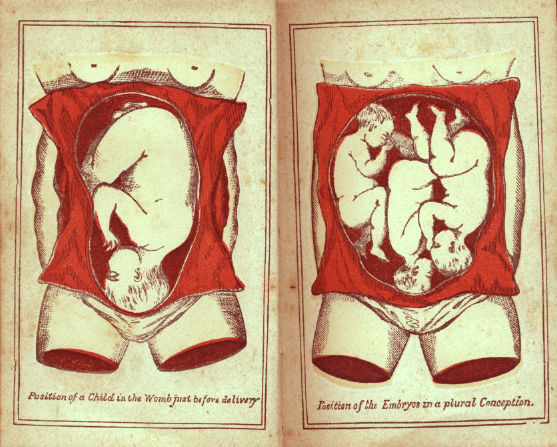
A fourteen-year-old Manchester girl, Mary Bertenshaw, first encountered the Masterpiece while working in a cap and hat factory during the First World War. Her friend Gladys brought in a copy, which Mary described as a “secret book”. She and her workmates pored over the book at lunchtime in fits of giggles, until one day their boss caught them reading, much to their shame. Afterwards, they “felt dubious” about men and assiduously avoided walking anywhere near to what they knew to be the local venereal disease clinic. Historians have claimed that working-class girls like these demonstrated their virtue by remaining conspicuously ignorant of the facts of life.10 This story suggests that girls were certainly eager for knowledge, even if they might pretend innocence. A year later, Mary’s mother fell pregnant again. Mary recalled that she visualized the growing fetus inside her mother’s body from what she remembered of the Masterpiece illustrations. So for Mary Bertenshaw, the Masterpiece functioned in multiple ways: as a kind of entertainment; then a source of shame; and finally a source of biological knowledge.11
It wasn’t just city girls like Mary who reached for the book. When the noted Shakespeare scholar A. L. Rowse went up to Oxford in the early 1920s, he never mentioned to his mother that he was studying Aristotle, because, as he explained, the name Aristotle “would have meant to my mother, as secretly to Victorian women, his book on child-bearing: unmentionable”. But Rowse knew that the book was tucked away in her chest of drawers back in his home in rural Cornwall.12
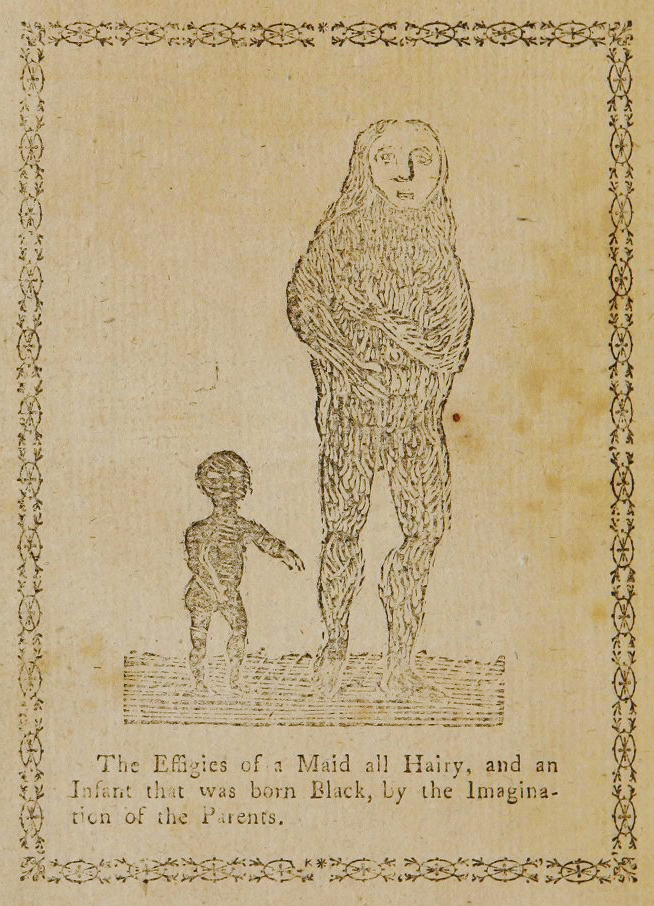
The work remained an iconic symbol of sexual knowledge for generations. In Evelyn Waugh’s Vile Bodies (1930), when a Customs Officer, his office walls “lined with contraband pornography”, inspects Adam Fenwick-Symes’ books to make sure he is not bringing any forbidden works into the country, he does so with the help of a printed list, headed by “Aristotle, Works Of (Illustrated)”.13 In the mid-1950s, copies of the Masterpiece were for sale in a Charing Cross Road bookshop, piled high next to Marie Stopes’ Married Love (1918).14 In the 1970s, an East Anglian agricultural worker told an oral history interviewer that she knew about reproductive matters from what she called “Harry Tottle’s little book”.15
Although little-known today, Aristotle’s Masterpiece was the go-to book for generations of British and American readers, male and female, who wanted to know about sex and making babies. Long after medical theories about reproduction and childbirth had changed, the book continued to promise readers access to hidden secrets and titillating details, a promise whose luster seems to have remained bright until almost yesterday.
Mary Fissell teaches the history of medicine at Johns Hopkins and edits the Bulletin of the History of Medicine. She writes about the ways that ordinary people in the past understood the natural world and their bodies. Vernacular Bodies (Oxford, 2004) explored how everyday ideas about making babies mediated large scale social changes. She is currently writing a cultural history of Aristotle’s Masterpiece.
Public Domain Works
Further Reading
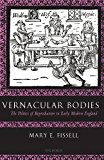
Vernacular Bodies: The Politics of Reproduction in Early Modern England (Oxford University Press, 2007) by Mary E. Fissell
Fissell explores gender relations and power seen through texts concerning the femal body, and how conception, pregnancy, and childbirth were understood in Early Modern England.
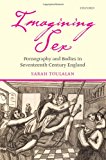
Imagining Sex: Pornography and Bodies in Seventeenth-Century England (Oxford University Press, 2007) by Sarah Toulalan
A study focusing on pornographic writing in 17th-century England, examing the contemporary ideas and representations of sex, sexuality, and eroticism.
John Cannon, Memoirs of the Birth, Education, Life and Death of: Mr. John Cannon. Sometime Excise Officer & Writing Master at Mere Glastenbury & West Lydford in the County of Somerset. (1743). Somerset Record Office, Ms. DD/SAS C/1193/4, p. 41. For a modern edition, see The Chronicles of John Cannon, Excise Officer and Writing Master, ed. John Money, (Oxford: Published for the British Academy by Oxford University Press, 2010).↩
The book has often been attributed to the popular medical writer William Salmon because a prefatory poem to the 2nd version (first published 1697) bears the initials “W.S.”. However, there is no evidence that Salmon had any role in the book’s composition 13 years earlier.↩
The Problemes of Aristotle, with other Philosophers and Phisitions. Wherein are contayned diuers questions, with their answers, touching the estate of mans bodie, (At Edenborough: Printed by Robert Waldgraue, 1595).↩
Aristotle’s Compleat Master-piece. In Three Parts. Displaying the Secrets of Nature in the Generation of Man… to Which Is Added, a Treasure of Health; Or, the Family Physician, The seventeenth edition, (London?: printed, and sold by the booksellers, 1728), 40, 15.↩
Francis Place, The Autobiography of Francis Place, ed. by Mary Thale, (Cambridge: Cambridge University Press, 1972), 45.pp. 261.↩
Aristoteles Master-piece, or, The secrets of generation diplayed [sic] in all the parts thereof…. (London: printed for J. How, and are to be sold next door to the Anchor Tavern in Sweetings Rents in Cornhil, 1684). Van Pelt Library, University of Pennsylvania EC65 A100 684a2.↩
Va. Revolutionary War Pension file of Edward Wiett — S3557 in the case of Edward Wiett, County of Anderson in the State of Tennessee (Act 7th June, 1832.) accessed on http://www.vagenweb.org/shenandoah/cem/wiett.html on June 30 2015.↩
Aristotle’s compleat master piece. In three parts…, 27th edition, ([London?]: Printed and sold by the booksellers, 1759), private collection.
Aristotle’s master-piece: or, the secrets of generation displayed in all the parts thereof… (London: printed for W.B. and are to be sold by most booksellers in London and Westminster, 1694), copy at British Library 1094.c.6. Garner v. Gordon, Supreme Court of Indiana, Nov. 1872.↩
James Joyce, Ulysses, ed. Jeri Johnson, (Oxford: Oxford University Press, 1993): 226, 722.↩
Simon Szreter and Kate Fisher, Sex before the Sexual Revolution: Intimate Life in England 1918-1963, Cambridge, UK ; New York : Cambridge University Press, 2010.↩
Mary Bertenshaw, Sunrise to Sunset. An Autobiography, (Bury, Lancs: Printwise Publications, Ltd., 1991): 111, 113.↩
A. L. Rowse, A Cornishman at Oxford, (London: Jonathan Cape, 1965): 196.↩
Evelyn Waugh, Vile Bodies, (Boston: Little Brown & Co, 1999): 23, 24 [1st published 1930].↩
Maurice Gorham, Londoners, (P. Marshall, London, 1951).↩
Personal communication, Michael Winstanley.↩
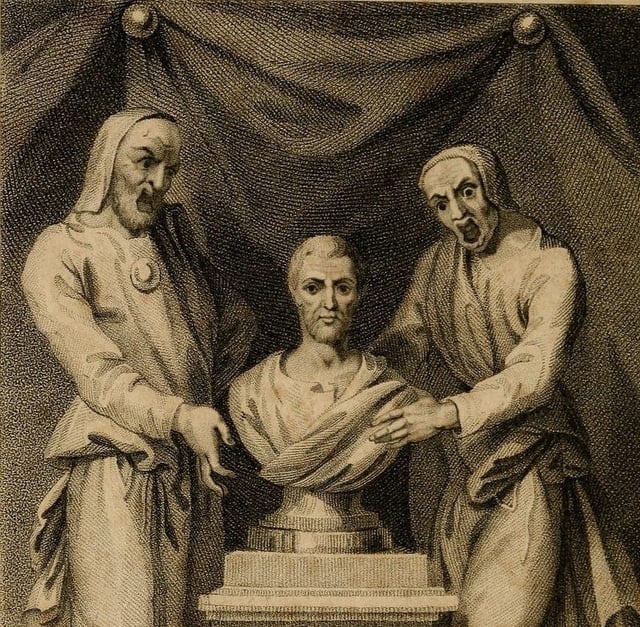 Machiavelli, Comedian
Tribal Life in Old Lyme: Canada’s Colorblind Chronicler and his Connecticut Exile
Abigail Walthausen explores the life and work of Arthur Heming, the Canadian painter who — having been diagnosed with colourblindness as a child — worked for most of his life in a distinctive palette of black, yellow, and white.
Machiavelli, Comedian
Tribal Life in Old Lyme: Canada’s Colorblind Chronicler and his Connecticut Exile
Abigail Walthausen explores the life and work of Arthur Heming, the Canadian painter who — having been diagnosed with colourblindness as a child — worked for most of his life in a distinctive palette of black, yellow, and white.